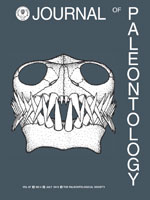Fossil evidence of barnacle encrustation of vertebrate bones is reported from the middle Pleistocene Port Orford Formation of southern coastal Oregon. This material includes two associated thoracic vertebrae and a femur referable to the extinct sea lion Proterozetes ulysses that are encrusted by 1400 individual barnacles (cf. Hesperibalanus hesperius), and a scapula of Zalophus californianus with barnacle attachment scars. In areas, the encrusting barnacles exhibit a roughly bimodal size range, and small barnacles are observed directly encrusting other larger individuals. The size, probable age, and lifespan of extant Hesperibalanus hesperius indicates a minimum period of four to seven months of seafloor exposure between decomposition and burial, although this estimate must be longer because at least two colonization events are represented. Barnacle attachment traces are identified as Anellusichnus circularis. The wide distribution of barnacles on some of these bones suggests these were regularly overturned by bottom currents, which would prevent barnacles from being smothered by prolonged contact with the sediment. Detailed study of barnacle-induced trace fossils on these specimens suggests that episkeletozoans and their traces can be useful sources of data regarding the biostratinomic history of vertebrate fossils.
How to translate text using browser tools
1 July 2013
Taphonomic Implications of Barnacle Encrusted Sea Lion Bones from the Middle Pleistocene Port Orford Formation, Coastal Oregon
Robert W. Boessenecker
ACCESS THE FULL ARTICLE

Journal of Paleontology
Vol. 87 • No. 4
July 2013
Vol. 87 • No. 4
July 2013




